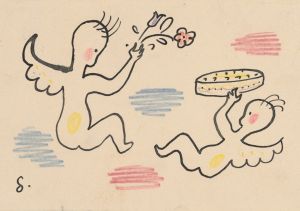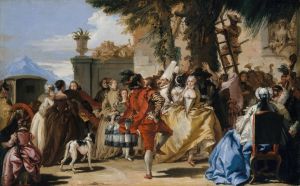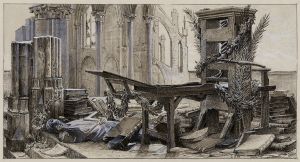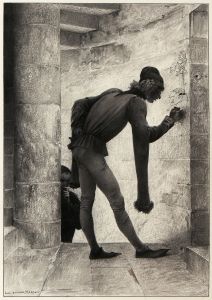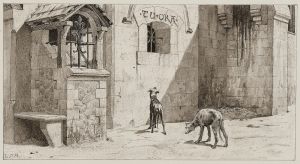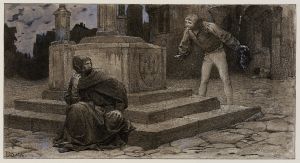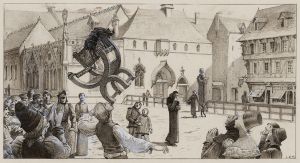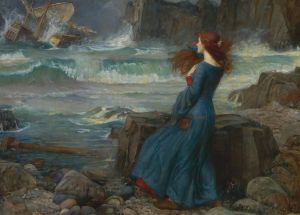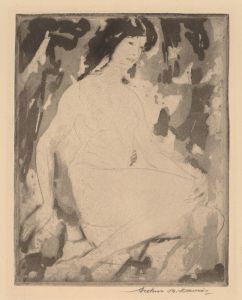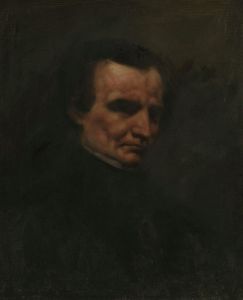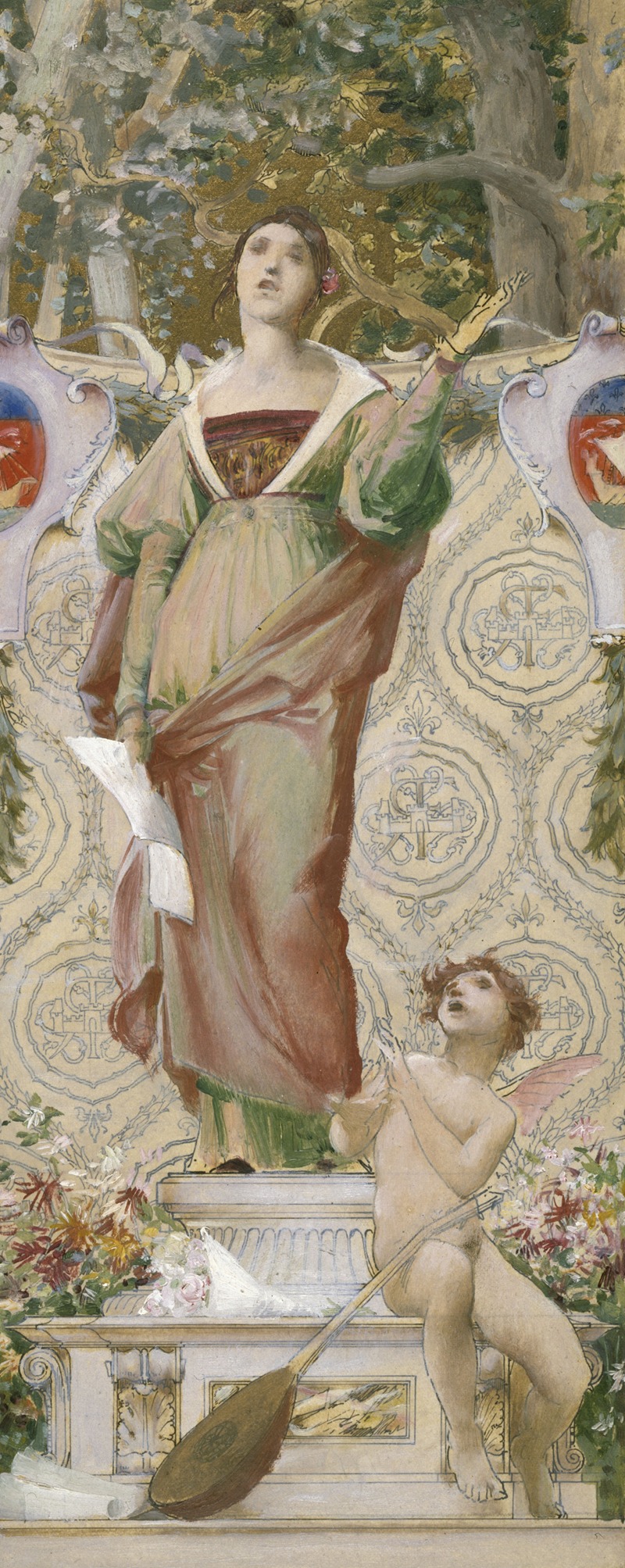
Le Chant
A hand-painted replica of Luc-Olivier Merson’s masterpiece Le Chant, meticulously crafted by professional artists to capture the true essence of the original. Each piece is created with museum-quality canvas and rare mineral pigments, carefully painted by experienced artists with delicate brushstrokes and rich, layered colors to perfectly recreate the texture of the original artwork. Unlike machine-printed reproductions, this hand-painted version brings the painting to life, infused with the artist’s emotions and skill in every stroke. Whether for personal collection or home decoration, it instantly elevates the artistic atmosphere of any space.
Luc-Olivier Merson was a French academic painter, born on May 21, 1846, and died on November 13, 1920. He is known for his detailed and imaginative works, often depicting historical, religious, and allegorical subjects. One of his notable works is "Le Chant," which translates to "The Song" in English.
"Le Chant" is an oil painting created by Merson, showcasing his characteristic style that blends meticulous detail with a strong narrative element. The painting reflects Merson's academic training and his ability to convey complex themes through his art. Merson studied at the École des Beaux-Arts in Paris under the tutelage of Gustave Chassevent-Bacques and Isidore Pils, which significantly influenced his artistic development.
The painting "Le Chant" is celebrated for its intricate composition and the emotional depth it conveys. It features a central figure, often interpreted as a personification of music or poetry, surrounded by an ethereal and serene atmosphere. The figure is depicted in a contemplative pose, suggesting a deep connection to the act of singing or reciting poetry. The use of light and shadow in the painting enhances the mystical quality of the scene, drawing the viewer into the intimate moment captured by Merson.
Merson's attention to detail is evident in the delicate rendering of the figure's clothing and the surrounding environment. The textures and colors are carefully chosen to create a harmonious and visually appealing composition. The background of the painting, though less detailed, provides a sense of depth and context, allowing the central figure to stand out prominently.
"Le Chant" exemplifies Merson's ability to merge technical skill with imaginative storytelling. His works often contain symbolic elements that invite viewers to explore deeper meanings and interpretations. In this painting, the serene expression of the figure and the tranquil setting may suggest themes of inspiration, creativity, and the transcendent power of art.
Throughout his career, Luc-Olivier Merson received numerous accolades and recognition for his contributions to the art world. He was awarded the Prix de Rome in 1869, which allowed him to study in Italy and further refine his artistic techniques. Merson's works were exhibited in various prestigious venues, including the Salon in Paris, where he gained critical acclaim.
In addition to his paintings, Merson also worked as an illustrator and designer. He created illustrations for books, including editions of Dante's "Divine Comedy" and works by other classical authors. His versatility as an artist extended to designing postage stamps and banknotes, showcasing his ability to adapt his skills to different mediums.
"Le Chant" remains an important example of Luc-Olivier Merson's artistic legacy. It reflects his dedication to his craft and his ability to evoke emotion and thought through his art. Merson's work continues to be appreciated by art enthusiasts and scholars for its technical excellence and the rich narratives it presents.






